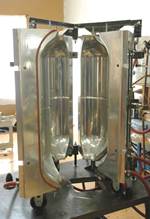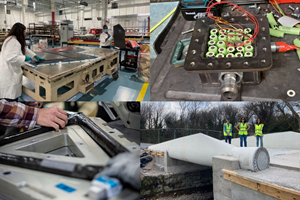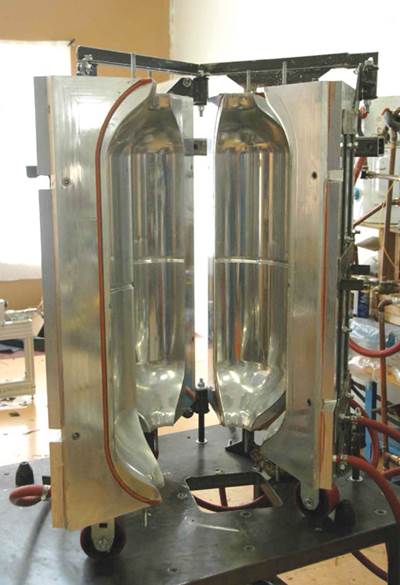The new carmakers
A host of new carmakers is using composites to build vehicles designed specifically to help us be less oil-dependent.
I was out driving the other day. My 13-year-old son was with me, and we were stopped at a light. As we waited for the signal to change, a large, red SUV drove past us. It had oversized tires, was customized with shiny chrome highlights and it dwarfed every vehicle around it. My son shook his head. “Man,” he said. “That looks ridiculous.”
“That?” I asked, pointing at the vehicle. “You know, not too long ago that would have been pretty cool.”
“Maybe, but not now,” he said. “It’s just too much.”
This exchange got me to wondering. First, is the sentiment expressed by my son — a person who, ostensibly, might be impressed by big and fast cars — more common than it used to be? If, as I suspect, it is, then why? The answer, I suppose, is obvious, and it started during the summer of 2008 when the price of gasoline in the U.S. soared above $4 per gallon. This, apparently, was the magical “tipping point” that got many of us to thinking more critically about the kind of vehicle we drive, its efficiency and its impact on our household expenses. Indeed, there are few things that affect widespread change in human behavior the way a radical change in expenses does, and 2008’s oil price spike got many of us to thinking and behaving very differently about what and how we drive.
Then, just as suddenly and mysteriously as the price increased, it went back down. Suddenly the nationwide fiscal imperative to upgrade to more efficient vehicles was gone. Theoretically we’d dodged the energy bullet and were back to normal.
The truth, as my son’s comment indicates, is that we aren’t really back to “normal,” because anxiety about the largely unexplained forces that drove up oil prices in the first place lurks in our collective subconscious. We all keep tucked in the back of our minds the variables that might trigger another price hike: A resurgent economy and resurgent demand, increased demand from developing countries, decreasing supply, OPEC’s penchant for price fixing, etc.
Layered on top of this scenario is the apparent devolution of the traditional American automotive industry. GM, Chrysler, and (to a lesser degree) Ford are busy remaking themselves and their products to cater to this uncertain energy landscape, developing electric vehicles.
Just as promising, though, is a host of new carmakers — many of them Progressive Automotive X PRIZE competitors — that have developed small, lightweight, fuel-efficient vehicles designed specifically to help us consumers be less oil-dependent. As a bonus, many of these vehicles make significant use of composites, including just-announced cars and trucks from Riversimple, Velozzi, Bright Automotive, Tesla, Fisker Automotive, APTERA and Boulder Electric Vehicle.
As proof of this trend, the SPE Automotive Composites Conference & Exhibition (held Sept. 15-16, in Troy, Mich.), featured keynotes by representatives from Tesla, Bright and Myers, among others. We departed for the ACCE conference just as this issue was put to bed, and we’re now busy preparing to report to you in the December issue about where we see composites headed in the automotive industry.
Related Content
Sustainability has come to composites and it's here to stay
It might be tempting to think of sustainability as a buzzword, but there are structural changes taking place in the composites industry that signal its permanence.
Read MoreReading the Boeing tea leaves
Boeing CEO David Calhoun says not to expect a new aircraft before 2035. What are aerocomposites fabricators supposed to make of that?
Read MoreWhat to make of the first JEC World in three years
CW went to JEC World 2022 not sure what to expect. We were pleasantly surprised, and learned much about where and how new composites technologies are being developed.
Read MoreAs 2023 begins, a look back at trending CW topics in 2022
With 2022 now behind us, CW’s editor-in-chief Jeff Sloan takes a look at the CW stories last year that received the most reader attention.
Read MoreRead Next
Composites fuel growth of fuel cell technology
Composite components in hydrogen fuel cell systems help handle higher heat and reduce stack size.
Read MoreLessons from Spring Hill
General Motors and Chrysler were back in Washington, D.C., in mid-February, asking for more bail-out money.
Read MoreComposites end markets: Energy (2024)
Composites are used widely in oil/gas, wind and other renewable energy applications. Despite market challenges, growth potential and innovation for composites continue.
Read More












.jpg;maxWidth=300;quality=90)













